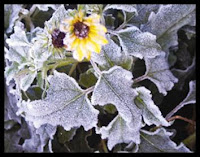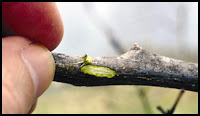
By Pam Brown, Urban Horticulture Extension Agent
The last two nights have brought freezing or near freezing temperatures to our area. Many of the plants that are used in landscapes in the Tampa Bay area can be vulnerable to these temperatures.
The first thing to do for landscape plants after a freeze is check that the soil has adequate moisture – not soggy, but moist. Some plants in pots may have frozen soil. Adding water to the pots to defrost the soil will make water available for the plants.
Plants that have been damaged by the cold will start to look wilted, then leaves may turn brown and die. You may be tempted to start pruning these plants back, but it is best to wait until the new growth starts in the spring. When the new leaves begin to sprout, you will know how far to prune back on each branch. You can remove the dead leaves if they are in an area where they are unsightly, but leaving them on might provide some cold protection for the rest of the plant if we get more freezing weather. It is ofte n difficult to determine how far freeze damage extends. If you are worried that the plant is dead, gently scrape the bark on a stem, if the cambium layer just under the bark is still green then the plant is alive.
n difficult to determine how far freeze damage extends. If you are worried that the plant is dead, gently scrape the bark on a stem, if the cambium layer just under the bark is still green then the plant is alive.
The last two nights have brought freezing or near freezing temperatures to our area. Many of the plants that are used in landscapes in the Tampa Bay area can be vulnerable to these temperatures.
The first thing to do for landscape plants after a freeze is check that the soil has adequate moisture – not soggy, but moist. Some plants in pots may have frozen soil. Adding water to the pots to defrost the soil will make water available for the plants.
Plants that have been damaged by the cold will start to look wilted, then leaves may turn brown and die. You may be tempted to start pruning these plants back, but it is best to wait until the new growth starts in the spring. When the new leaves begin to sprout, you will know how far to prune back on each branch. You can remove the dead leaves if they are in an area where they are unsightly, but leaving them on might provide some cold protection for the rest of the plant if we get more freezing weather. It is ofte
 n difficult to determine how far freeze damage extends. If you are worried that the plant is dead, gently scrape the bark on a stem, if the cambium layer just under the bark is still green then the plant is alive.
n difficult to determine how far freeze damage extends. If you are worried that the plant is dead, gently scrape the bark on a stem, if the cambium layer just under the bark is still green then the plant is alive. Some herbaceous plants - not woody like shrubs and trees – such as bananas, impatiens, and begonias will most likely collapse and need to just be cut down and removed. This will reduce fungal or bacterial problems as these dead plants decay. Banana trees will usually send up new pups from the root system in the spring.
You may also find that your lawn has been damaged by freezing temperatures. Our most common lawn grass, Floratam St. Augustine, is the most sensitive to cold temperatures. Zoysia, Bermuda and Bahia grass are more cold tolerant. When freezing temperatures have been preceded by warm temperatures, damage is more likely. Grass can look wilted, then turn whitish and then black. All may not be lost – but you will have to wait until spring to really know for sure. Cold damage initially may look like drought stress, but adding to much water while the grass is nearly dormant is not necessary and will waste water resources. More information can be found in the University of Florida (UF)/IFAS Extension publication Low Temperature Damage to Turf at: http://edis.ifas.ufl.edu/LH067
I have also seen many cold sensitive palms planted in our area and these palms are likely to be damaged by freezing temperatures. There are ways to possibly save them by treating the bud with Copper fungicide. The UF/IFAS Extension publication Treating Cold Damaged Palms is available at: http://edis.ifas.ufl.edu/MG318
Also see the December 10, 2008 post to this blog: Cold Protection for Landscape Plants
